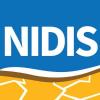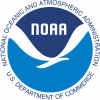Snowmelt Perturbations and Water Supply Forecast Errors
Since 2002, the headwaters of the Colorado River and nearby basins have experienced extensive changes in land cover, raising questions about streamflow and forecast accuracy. Widespread tree mortality from bark beetle infestation has taken place across a range of forest types, elevation, and latitude. Extent and severity of forest structure alteration have been observed through a combination of aerial survey satellite remote-sensing, and in situ measurements. Additional perturbations have resulted from deposition of dust from regional dry-land sources on mountain snowpacks that strongly alter the snow surface albedo, driving earlier and faster snowmelt runoff. These perturbations likely result in abnormalities between the historical relationships between the quantity of snowfall and the resulting streamflow volume, which provide the basis for operational water supply forecasts. This project sought identify the effect of these perturbations on streamflow generation, providing water resource managers guidance as to how operational water supply forecast models may need to be augmented to account for changes in runoff production. PIs drove the Distributed Hydrology and Vegetation Model (DHSVM) with observed meteorology, distributed satellite-based snowpack information, time-varying maps of leaf area index and forest properties to emulate bark beetle impacts, and parameterizations of snow albedo based on observations of dust forcing. Results from beetle-killed canopy alteration suggest slightly greater snow accumulation as a result of less interception and reduced canopy sublimation, contributing to overall increases in annual water yield on the order of 10%. However, understory regeneration roughly halves the changes in water yield. Contrasted against a purely observational estimate of runoff efficiency change with cumulative forest mortality, the results suggest comparable sensitivities; however, positive water yield changes are not statistically significant. The primary hydrologic impact of dust-on-snow forcing is an increased rate of snowmelt associated with more extreme dust deposition, producing earlier peak streamflow rates for snowmelt-dominated catchments on the order of 1–3 weeks. Future work based on this project may focus on methods to ingest spatial hydrologic information into the NOAA CBRFC streamflow forecasting processes to improve forecast model representation of these perturbations.
Livneh B., J.S. Deems., D. Schneider, J. Barsugli, and N.P. Molotch (2014), Filling in the Gaps: Inferring Spatially Distributed Precipitation from Gauge Observations over Complex Terrain. Water Resources Research, in review
Livneh B., J.S. Deems, B. Buma, J.J. Barsugli, D. Schneider, N.P. Molotch, K. Wolter, and C.A. Wessman, 2014: Catchment Response to Bark Beetle Outbreak in the Upper Colorado River Basin, Journal of Geophysical Research (in review).
Multiple efforts to incorporate research findings into CBRFC operations.


